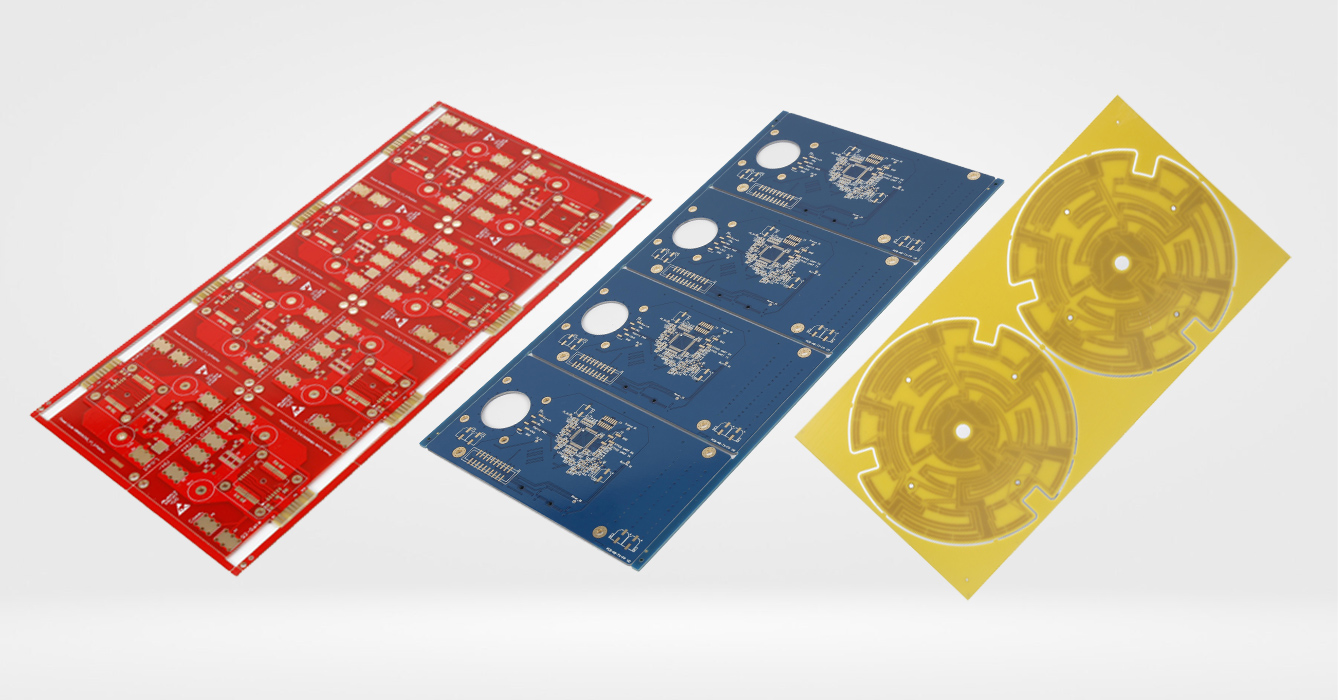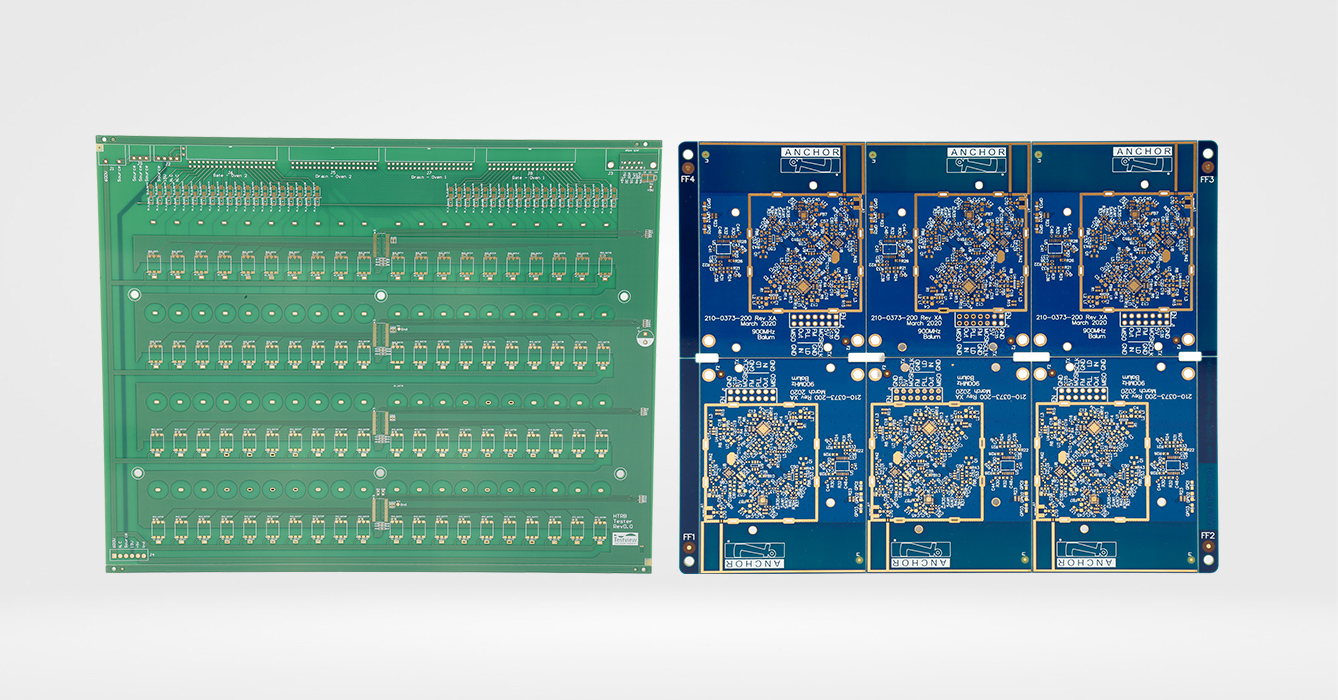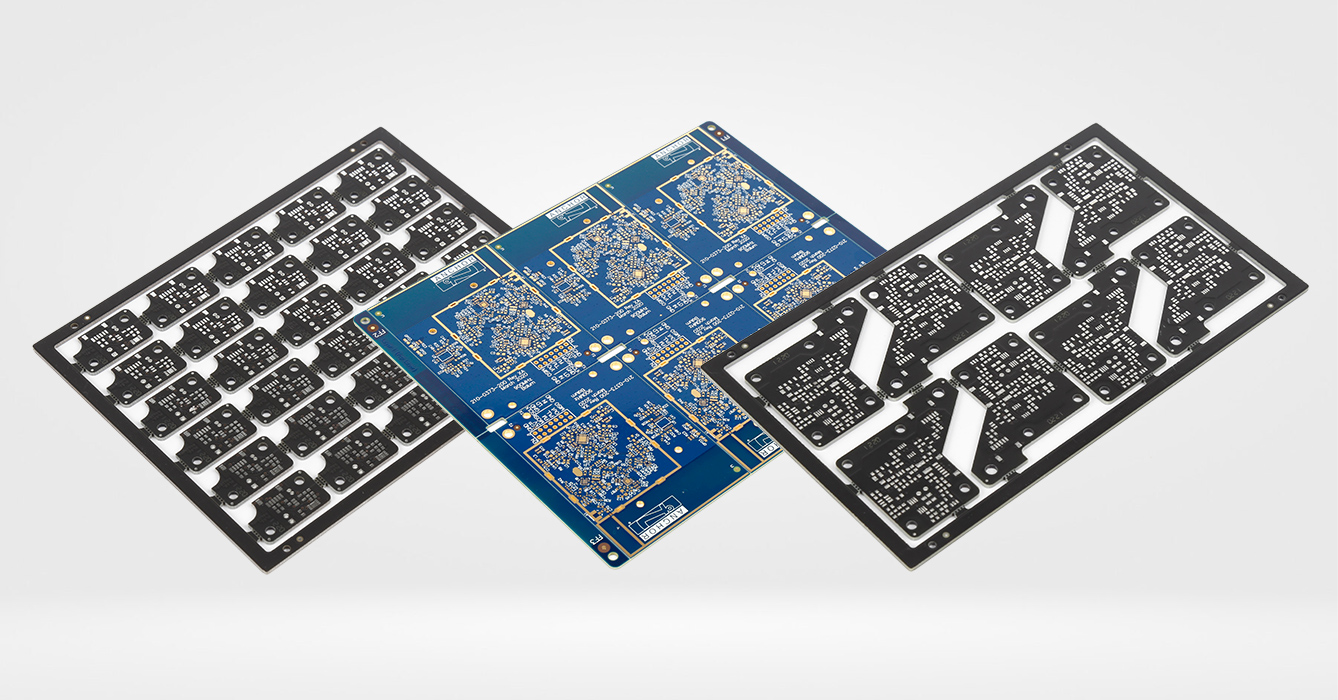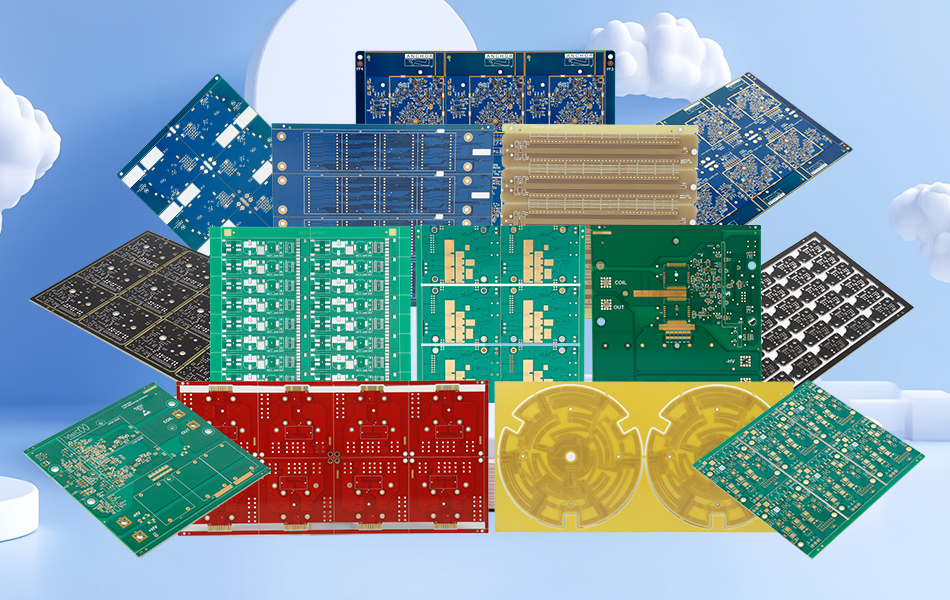-
- PCB TYPE
- PRINTED CIRCUIT BOARD PROTOTYPE ALUMINUM PRINTED CIRCUIT BOARD R&F PCB FPC HIGH FREQUENCY PCB HIGH-TG PCB HEAVY COPPER PCB HDI PCB PCB FOR LIGHTING METAL CORE PCB
time:Aug 05. 2025, 09:10:35
In the realm of printed circuit board (PCB) engineering, where temperature fluctuations pose constant challenges to reliability, low CTE fr4 has established itself as a foundational material for applications demanding precise dimensional control. CTE, or coefficient of thermal expansion, is a critical parameter that measures how a material expands or contracts with temperature changes—a factor that directly impacts the integrity of solder joints, via connections, and layer alignment in PCBs. Unlike standard FR4, which exhibits moderate thermal expansion, low CTE fr4 is engineered to minimize this expansion, thereby reducing stress on critical components and extending the lifespan of electronic devices. This article explores the technical characteristics of low CTE fr4, from its material composition and key properties to its manufacturing considerations and diverse applications, highlighting its role as a versatile solution for balancing performance and cost in thermal-critical designs.
low CTE fr4 is a specialized glass-reinforced epoxy laminate designed to address the core issue of thermal expansion mismatch in PCBs. In standard FR4, temperature variations can cause the laminate to expand at rates significantly different from those of copper traces, solder alloys, or component leads. This mismatch creates mechanical stress that, over time, leads to common failures such as via cracking, solder joint fatigue, and delamination. low CTE fr4 mitigates these risks by reducing expansion across all axes—particularly the z-axis (thickness direction), which is most vulnerable to stress during thermal cycling.
The "low CTE" designation is not arbitrary; it refers to specific performance thresholds. While standard FR4 typically has an in-plane (x/y) CTE of 12–18 ppm/°C (below its glass transition temperature, Tg) and a z-axis CTE of 60–80 ppm/°C (below Tg), low CTE fr4 achieves in-plane CTE of 8–12 ppm/°C and z-axis CTE of 40–60 ppm/°C under the same conditions. This reduction is achieved through targeted material modifications, making low CTE fr4 suitable for a wide range of applications, from consumer electronics with moderate thermal demands to industrial systems operating in fluctuating temperatures.

The ability of low CTE fr4 to control thermal expansion stems from a carefully balanced composition of resin, reinforcement, and additives, each contributing to its overall performance:
Epoxy Resin Formulations: low CTE fr4 uses modified epoxy resins, often blended with novolac hardeners, to create a more rigid polymer network. These resins have a higher cross-link density than standard bisphenol-A epoxies, restricting molecular movement when heated. The curing process is optimized—typically 90–120 minutes at 170–190°C—to ensure full cross-linking, which is essential for maintaining low expansion properties.
Glass Fiber Reinforcement: E-glass fibers, woven into tight patterns (such as 2116 or 7628), provide a structural framework that resists expansion. The fiber-to-resin ratio is increased to 55–60% by weight compared to standard FR4 (50–55%), leveraging the glass’s inherently low CTE (≈5 ppm/°C) to counteract the resin’s higher expansion tendency. In some grades, high-strength S-glass is used to further reduce in-plane expansion, though this increases material cost.
Inorganic Fillers: Micron-sized fillers like fused silica (SiO₂) are dispersed in the resin matrix to reduce thermal expansion. Silica has a CTE of ≈0.5 ppm/°C, acting as a "stabilizer" that limits resin expansion. Filler loading ranges from 20–30% by weight, with higher concentrations improving CTE performance but requiring adjustments to manufacturing processes to maintain workability.
Coupling Agents: Silane-based agents are added to enhance bonding between fillers, glass fibers, and resin. This ensures the composite acts as a unified structure, preventing localized expansion at material interfaces and reducing the risk of delamination under thermal stress.

The physical properties of low CTE fr4 are defined by its ability to maintain size and shape across temperature ranges, with datasheets emphasizing metrics that reflect its stability:
Thermal Expansion Profiles: In-plane CTE (x/y axes) ranges from 8–12 ppm/°C below Tg and 30–45 ppm/°C above Tg, while z-axis CTE is 40–60 ppm/°C below Tg and 150–200 ppm/°C above Tg. These values are carefully measured using thermal mechanical analysis (TMA) per IPC-TM-650 2.4.41, ensuring consistency across production batches.
Density and Thickness: low CTE fr4 has a density of 1.85–2.0 g/cm³, slightly higher than standard FR4 due to filler content. Thickness ranges from 0.1 mm to 3.2 mm, with tight tolerances (±5%) to ensure uniform expansion behavior across the PCB.
Moisture Absorption: Typically ≤0.17% after 24-hour immersion, slightly higher than standard FR4 (≤0.15%) due to increased filler surface area. However, this is manageable with proper conformal coating in humid environments, such as outdoor enclosures or marine electronics.
Surface Characteristics: The laminate surface is engineered to support strong adhesion with copper and solder mask. Surface roughness (Ra 0.8–1.2 μm) ensures reliable bonding, while filler distribution is controlled to prevent uneven wear during drilling or routing.

low CTE fr4 maintains robust electrical properties, making it suitable for a range of applications from low-frequency power circuits to moderate-speed signal lines:
Dielectric Constant (Dk): 4.3–4.8 at 1 MHz, slightly higher than standard FR4 due to silica fillers. However, Dk stability across temperatures is superior, varying by ≤4% between 25°C and 125°C, ensuring consistent impedance control in designs up to 5 GHz.
Dissipation Factor (Df): ≤0.025 at 1 MHz, with minimal increase at elevated temperatures (≤0.03 at 150°C). This low energy loss makes it suitable for RF applications like Wi-Fi routers or industrial sensors operating in the 2.4–5 GHz range.
Dielectric Strength: ≥20 kV/mm (per ASTM D149), ensuring insulation integrity in high-voltage applications such as power supplies or motor controllers.
Insulation Resistance: Volume resistivity ≥10¹⁴ Ω·cm and surface resistivity ≥10¹³ Ω, even after thermal cycling, ensuring minimal leakage current in humid or high-temperature environments.

The mechanical properties of low CTE fr4 are optimized to resist the stresses of repeated thermal expansion and contraction:
Tensile Strength: ≥420 MPa along the fiber direction, 5–10% higher than standard FR4, due to the dense fiber network and filler reinforcement. This resistance to pulling forces is critical for PCBs in vibrating environments, such as automotive dashboards or industrial machinery.
Flexural Strength: ≥520 MPa at room temperature and ≥320 MPa at 125°C, ensuring the laminate remains rigid during thermal cycling. This reduces the risk of board warpage, which can misalign components or damage solder joints.
Peel Strength: ≥1.0 N/mm for 1 oz copper, ensuring strong adhesion between copper traces and the laminate. This is particularly important in low CTE fr4, as reduced expansion can concentrate stress at the copper-resin interface.
Impact Resistance: Charpy impact strength ≥15 kJ/m², slightly lower than standard FR4 due to filler content but sufficient for most applications. Impact-modified grades are available for use cases requiring enhanced toughness, such as portable electronics.

Thermal properties are central to low CTE fr4’s functionality, dictating its suitability for temperature-critical applications:
Glass Transition Temperature (Tg): 140–160°C, 10–20°C higher than standard FR4, achieved through the modified resin system. This extends the range where the material remains in its rigid, low-expansion state, making it suitable for applications operating up to 100–120°C.
Decomposition Temperature (Td): ≥320°C, ensuring compatibility with lead-free soldering processes (peak temperatures ~260°C) without resin degradation or outgassing.
Thermal Conductivity: 0.25–0.35 W/m·K, marginally higher than standard FR4 due to thermally conductive fillers. This modest improvement helps dissipate heat from components like voltage regulators, reducing hotspots.
Thermal Cycling Resistance: Survives 500+ thermal cycles (-40°C to +125°C) with minimal dimensional change (<0.1%) and no delamination, outperforming standard FR4 in durability tests.
The unique composition of low CTE fr4 requires specific manufacturing adjustments to ensure quality:
Lamination: Higher press pressures (250–350 psi) and longer cure times (90–120 minutes) are needed to ensure resin fully infiltrates the dense fiber weave and surrounds fillers. A controlled cooling rate (2–3°C/min) prevents internal stresses.
Drilling: The abrasive nature of silica fillers requires carbide drill bits with enhanced wear resistance. Drill speeds of 20,000–50,000 RPM and feed rates of 0.1–0.2 mm/rev minimize burring and resin smearing in vias.
Plating: Chemical desmearing processes may need to be extended to remove resin from around fillers, ensuring reliable copper plating in vias. Plasma desmearing is often preferred for high-precision designs.
Solder Mask Application: The laminate’s harder surface may require increased surface preparation (e.g., micro-etching) to ensure solder mask adhesion. UV-cured masks are recommended for their fast curing and thermal resistance.
low CTE fr4 meets key industry standards, ensuring reliability across applications:
IPC-4101: Classified under Type 2 (high-performance) with CTE requirements (in-plane ≤12 ppm/°C, z-axis ≤60 ppm/°C below Tg) that distinguish it from standard FR4.
UL 94 V-0: Maintains flame retardancy, with fillers like alumina enhancing fire resistance by acting as heat sinks during combustion.
RoHS and REACH: Formulations are free from restricted substances, with bromine-free options available to meet strict environmental regulations.
Automotive Qualifications: Many grades comply with IATF 16949, ensuring suitability for automotive electronics such as infotainment systems and climate controllers.
Rigorous testing validates low CTE fr4’s performance claims:
CTE Verification: TMA testing across -55°C to +200°C confirms in-plane and z-axis expansion values, ensuring consistency between batches.
Thermal Cycling Tests: PCBs are subjected to 500 cycles of -40°C to +125°C, with via integrity checked using X-ray or cross-sectional analysis. low CTE fr4 typically shows <10% via failure rates, compared to 25–30% for standard FR4.
Solderability Testing: Confirming compatibility with lead-free solders through wetting balance tests, ensuring strong solder joints even after thermal aging.
Moisture Sensitivity Testing: MSL 3 or higher ratings ensure the material resists delamination when exposed to humidity followed by reflow soldering.
low CTE fr4 is widely used in applications where thermal stability is important but extreme performance is not required:
Consumer Electronics: Smartphones, tablets, and laptops use low CTE fr4 in their main PCBs to prevent solder joint failures during repeated charging cycles, which generate moderate heat.
Automotive Cabin Electronics: Infotainment systems, GPS modules, and climate controls rely on its stability to withstand cabin temperature fluctuations (-40°C to +85°C).
Industrial Sensors: Temperature, pressure, and flow sensors use low CTE fr4 to maintain calibration accuracy across operating temperatures, ensuring reliable data collection.
Telecommunications: Mid-range routers and switches use low CTE fr4 to maintain signal integrity in 2.4–5 GHz bands, balancing performance and cost.
low CTE fr4 has limitations that guide material selection:
Cost: 20–30% more expensive than standard FR4, making it unnecessary for low-cost, low-temperature applications like toys or basic appliances.
High-Temperature Limitations: Not suitable for continuous operation above 120°C, where high-Tg low CTE variants or ceramic substrates are better choices.
Ultra-High-Frequency Limitations: Its Dk stability is insufficient for millimeter-wave applications (30+ GHz), where PTFE-based laminates are preferred.
Alternatives include high-Tg low CTE FR4 (for higher temperatures), ceramic-filled PCBs (for better thermal conductivity), and metal-core laminates (for extreme heat dissipation).
Ongoing developments are expanding low CTE fr4’s capabilities:
Hybrid Fillers: Combining silica with nano-scale aluminum oxide to reduce CTE further (in-plane ≤8 ppm/°C) while improving thermal conductivity (0.4–0.5 W/m·K).
Sustainable Formulations: Using bio-based epoxy resins and recycled glass fibers to reduce environmental impact without sacrificing CTE performance.
Thin-Core Variants: Ultra-thin low CTE fr4 (≤0.1 mm) for flexible-rigid PCBs, enabling thermal stability in wearable devices and foldable electronics.
low CTE fr4 strikes a critical balance between thermal stability, performance, and cost, making it a versatile choice for a wide range of electronic applications. By reducing thermal expansion and mitigating stress on solder joints and vias, it enhances PCB reliability without the premium cost of ultra-high-performance materials. From consumer devices to industrial sensors, low CTE fr4 plays a vital role in ensuring electronics perform consistently across temperature fluctuations, underpinning the functionality of modern technology. As demand for more reliable and compact electronics grows, low CTE fr4 will continue to evolve, offering improved properties and sustainability to meet emerging challenges.

Got project ready to assembly? Contact us: info@apollopcb.com



We're not around but we still want to hear from you! Leave us a note:

Leave Message to APOLLOPCB
